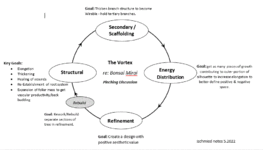Greetings Folks! I had to take a break from writing as I was busy on our bonsai.
That doesn't mean I haven't been keeping up with this thread. I have, with increasing interest at the great points folks are contributing to the thread. I have to say first and foremost I so appreciate your ideas and thoughts to support this thread.
This morning I had to laugh, sitting out back thinking, suddenly realizing that while not strictly trying to listen to my trees, thanks to
@BobbyLane I sure was communing with nature while looking at two trees we'd, with the help of Todd Schlafer reworked two weeks ago.
These trees have been worked on by at least three generations of bonsai hobbyists and are just starting to reach their potential.
Mugo Pine Japanese White Pine
View attachment 452158 View attachment 452160
The tenuous continuity of these trees when I first received these suddenly as a noob and my experiences since in bonsai work is why I started this thread. It seems to me Bonsai is really all about knowing and refining the human factors so a hobbyist is ready, knowledgeable and able to properly work with trees. Actually might be a logical next step
But first, there is some unfinished business that it seems proper to address.
I think it was
@ShadyStump who asked for a mission statement. (The tread started with:
What are the best ways to create sustainable conditions in which bonsai trees will survive. (I still think this is ok up to now, but see below and tell me what you think.)
So far in the thread we've explored what sustainable bonsai creating a working definition.
A couple folks in the past days have added some really nice ideas that likely ought to be included and/or discussed further on this thread. (Please forgive me for paraphrasing and if I miss any topic or person. Also so sorry for all the name checking

)
I think
@19Mateo83 and
@Joe Dupre' mentioned matching a tree to the climate it was being worked in (Without additional support)
@a1dusty mentioned proper pH of Water and media
@Adam D mentioned techniques to achieve proper ramification and back budding.
Many folks
@Orion_metalhead ,
@dbonsaiw ,
@LAS @Kadebe spoke about the need for methods of improving the health of the rhizosphere
@Mikecheck123 Discussed about what happens when something goes wrong... or, perhaps, being prepared for problems Human and environment.
@Cajunrider discussed sustainable conditions or limitations
@Glaucus and
@Paradox discussed potential limitations for life in a pot. ( btw
@Bonsai Nut did mention yamadori in the field as being a living sustainable example. Perhaps Dan's work is somewhat similar human influenced example?)
@ShadyStump - mentioned my intent was to use existing techniques and methods to answer this question. (I'd say mostly. Yet lots of things we will discuss can be controversial in the Wild West of Bonsai Nut. For example media, fertilization, chemical use, need for a healthy rhizosphere to name a couple)
In my own mind I've been thinking alot about "What's a sustainable technique?" timing, amounts, and how to nail down proper and environmentally responsible chemical use.
Finally,
@August44 and other folks discussed the term "sustainability" and the possible need to modify the term. Also the definition of, "sustainable bonsai". (While I sought for a less "politically charged" word to replace sustainable to better define the concept, I'm falling short so far..... sorry)
Potential Next Steps
1. I'm going to do some work and see if I can fold some of the easiest topics into the existing work... (There are: ph of water and media, proper ramification and back budding, matching a tree to the climate (without support). So I'll work on folding these in to the existing framework.
2. Folks who desire might help by thinking about and discussing any of the above topics which remain (I'll jump in once I'm done) These are:
- Methods to improve the health of the rhizosphere in a bonsai system,
- Simple, specific ways to be realistically prepared for different human and environmental problems
- Specific things that limit or enhance or provide sustainable conditions for bonsai
- Limitations and ways to improve a bonsai's life in a pot...
- Timing issues for techniques and caring for the health of bonsai
- Proper and environmentally responsible chemical use
- Absolutely anything folks desire consistent with the threads intent
3.... and perhaps mull this question over.... it might help.
What are the methods and techniques which will keep a bonsai sustainable (robust and resilient for generations) while meeting the aesthetic demands of bonsai (any styling method.)?
Thanks again everyone!
cheers
DSD sends



